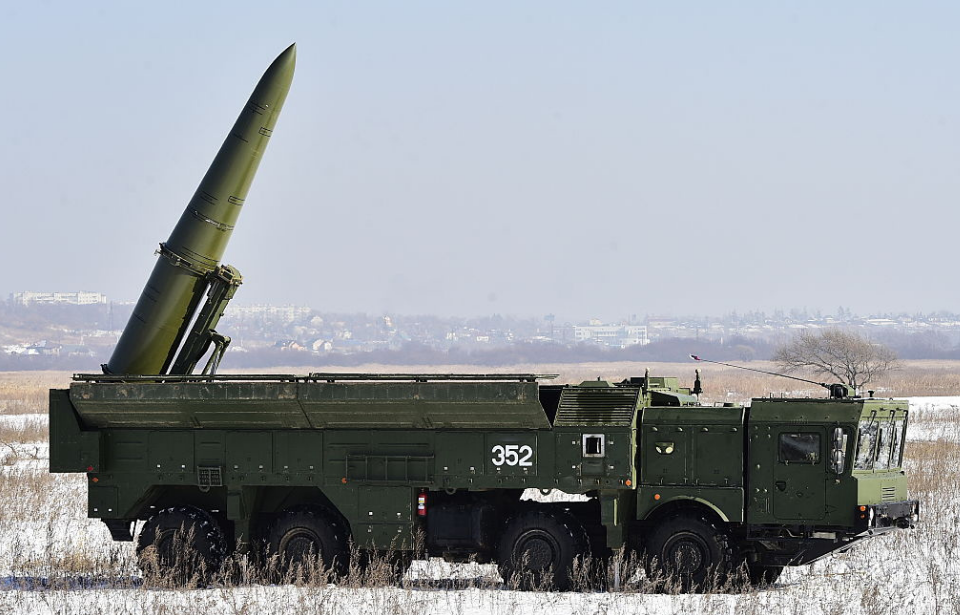The Iskander is a Russian mobile short-range hypersonic ballistic missile system that was developed shortly after the collapse of the Soviet Union. Officially entering service in 2006, it has seen use in many Russian-involved combat situations, including the 2022 invasion of Ukraine.
Development of the Iskander missile system
Design work for the Iskander began in December 1988, with the intention of replacing the Scud missile, which was developed by Russia during the Cold War. The first attempt was the OTR-23 Oka, but this violated the 1987 Intermediate Nuclear Forces (INF) Treaty signed by US President Ronald Reagan and Soviet President Mikhail Gorbachev.
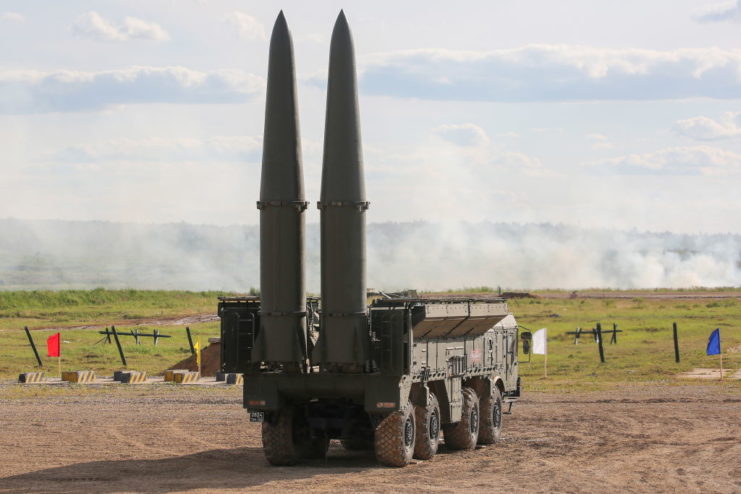
The manufacture of the Iskander involved three separate parties. Votkinsk Machine Building Plant was tasked with producing the missiles, while the ground equipment fell under the purview of Production Association Barricades. The system as a whole came from the minds of those working with the Design Bureau in Kolomna (KBM), which began developing the weapon in 1993. The hope was this new weapon could overcome air defense systems.
The first successful launch occurred in 1996, and the Russian military began state trials two years later, completing 13 at Kapustin Yar test range. In 2006, following the completion of the tests, the Iskander system was adopted by the Russian Army. At present, they are using the 7.3-meters-long Iskander-M variant, which uses 9M723 missiles.
Iskander specs
As aforementioned, the Iskander-M system is equipped with two 9M723 missiles, which can be targeted independently. Each is equipped with its own warhead, with a payload of 1,500 pounds, and can maneuver in-flight with the use of an inertial and optical guidance system. This allows them to hit moving targets, as well as stationary ones, and be retargeted after launch.
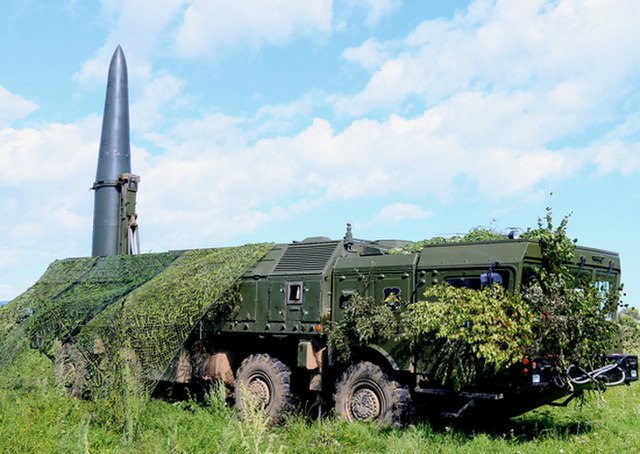
Once the first missile has been launched, the second can be fired less than a minute later. To acquire a target, the operator uses a variety of tools, including satellite, aircraft, aerial photos, an artillery observer and a conventional intelligence system. Once launched, the missile travels at a hypersonic speed of between 1,200 and 2,600 m/s, and while in flight uses fins to reduce its radar signature.
The Iskander can make use of several types of warheads, including fuel-air explosive enhanced-blast warheads, cluster munitions and those designed for high explosive fragmentation. It can also be equipped with nuclear warheads with a yield of between five and 50 kilotons of TNT, along with ones that act like a flamethrower and can penetrate bunkers.
According to the Russian Army, a single warhead can cause 25,000-square-meters of destruction.
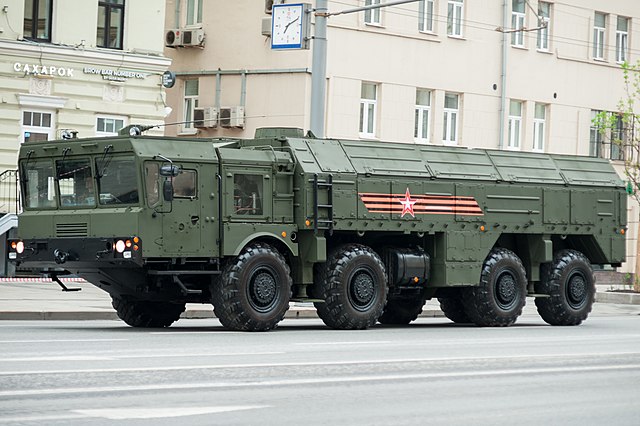
The Iskander system requires a host of vehicles and additional parts to ensure it’s operational. Along with the missiles and the transporter-erector-launcher (TEL) vehicle, it also features a re-loading vehicle carrying two reload missiles, a command/staff vehicle, an information preparation station vehicle, a maintenance vehicle and a life support vehicle.
Iskander variants
Aside from the Iskander-M, there are two main variants of the missile, the K and E. The Iskander-K was developed to fire the 9M728 (SSC-7) cruise missile, along with the new 9M729 (SSC-8) long-range missile.
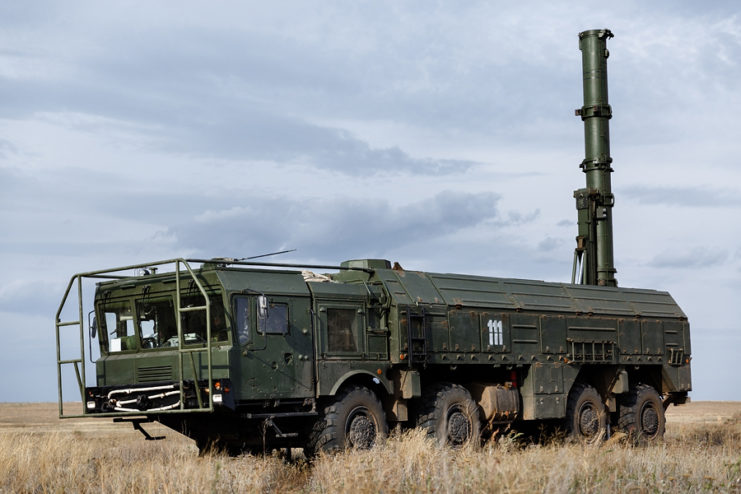
The Iskander-E is the downgraded version of the missile system, intended solely for export purposes. In accordance with Missile Technology Control Regime (MTCR) restrictions, it features a smaller fuel tank and uses the 9M720 missile. It’s equipped with a simplified inertial system with an accuracy of 30 to 70m CEP, which is not as accurate as the M variant used by the Russian Army.
Armenia became the first international purchaser of the Iskander-E in 2016. A year later, Algeria bought four regimes, totaling 48 TELs and 120 support vehicles.
Use in conflict
At present, only three countries use the Iskander missile system: Russia, Armenia and Algeria. The weapons system has been used in four conflicts, beginning in 2008 during the Russo-Georgian War, when Dutch journalist Stan Storimans was killed.
Russia also deployed the Iskander to Syria during that country’s civil war. In 2018, Russian Deputy Prime Minister Yury Borisov reported the missile system, along with the Smerch and Tornado-G rocket launchers, have proved their combat effectiveness in Syria.
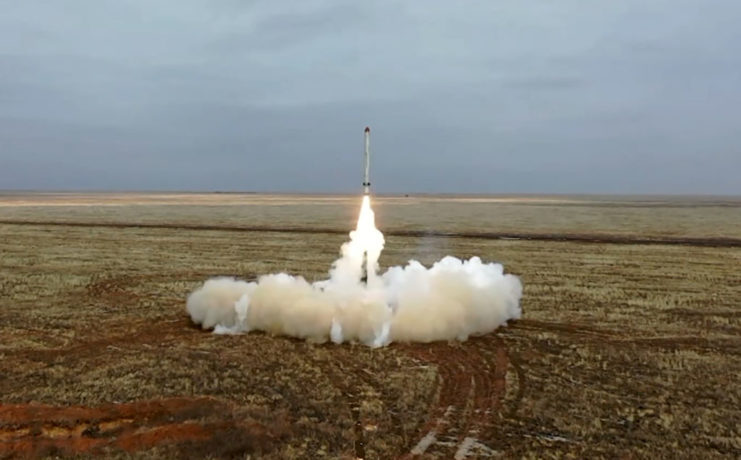
Most recently, the Iskander has seen use in the 2020 Nagorno-Karabakh War, when Armenia used the missiles against Azerbaijani forces, and during the 2022 Russian invasion of Ukraine. According to an advisor to Ukraine’s interior minister, Iskander missiles had been launched from Belarus to Ukraine in late February. As of March 10, 2022, reports from the Chernihiv claimed Ukraine’s Armed Forces had destroyed a Russian Iskander-M division.
